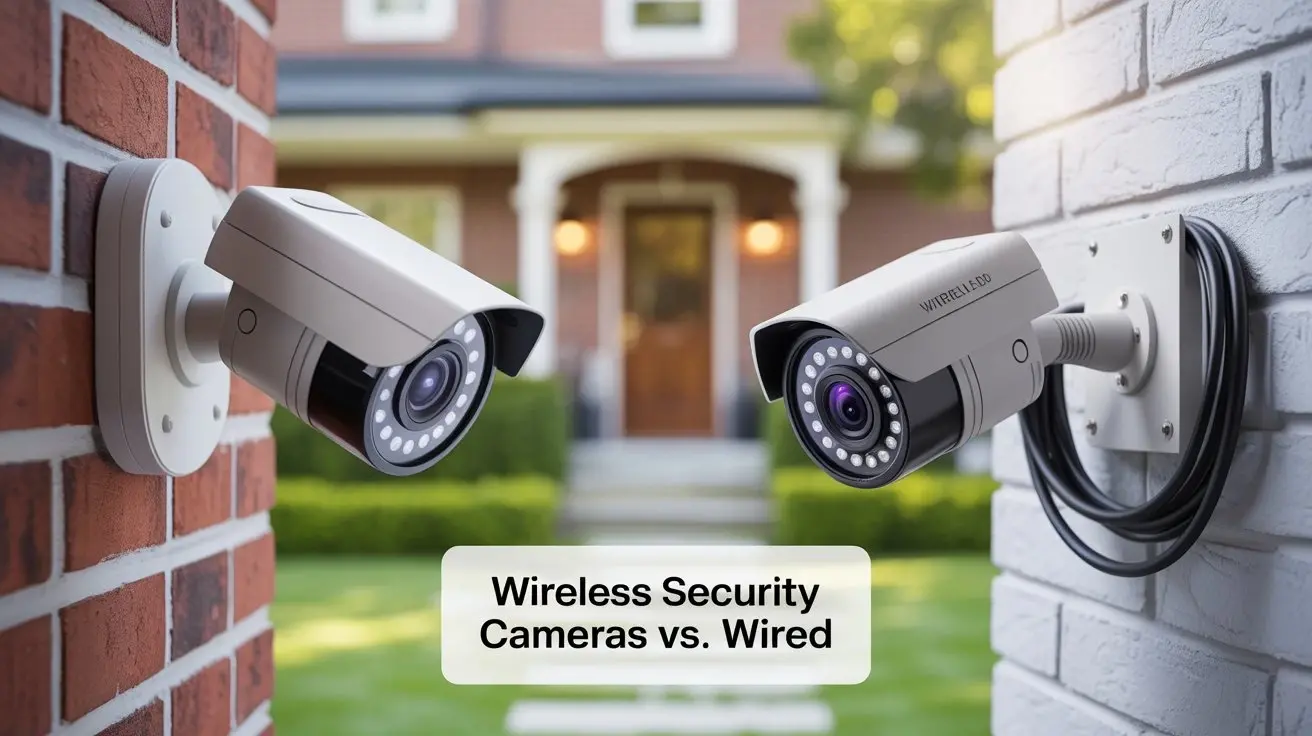What Cameras Work With Ring?
Ring, an Amazon-owned company, is a leading name in home security, offering video doorbells, cameras, and alarm systems that integrate seamlessly through the Ring app. For users looking to expand their Ring ecosystem, understanding which cameras are compatible is crucial for building a cohesive security setup. This guide explores the cameras that work with the Ring system, including Ring-branded cameras, ONVIF-compatible cameras, and limitations of third-party integrations, as well as setup tips and considerations for 2025.
Overview of Ring’s Ecosystem
Ring’s ecosystem is designed around its app, which centralizes control of Ring video doorbells, security cameras, alarms, and smart lighting. The app supports features like live view, motion detection, two-way audio, and video recording (with a Ring Home subscription). Ring cameras are optimized for Alexa integration, allowing users to view feeds on Echo Show or Fire TV devices. While Ring primarily supports its own cameras, it also allows limited integration with select third-party cameras that use the ONVIF protocol, provided specific hardware and subscriptions are in place.
Note: A Ring Home subscription (Standard or Premium) is required for video recording, storage (up to 180 days), and advanced features like AI-based person detection.
Ring-Branded Cameras
Ring offers a variety of cameras designed to work natively with the Ring app, ensuring full functionality and easy setup. Below are the primary Ring camera models available in 2025:
1. Ring Indoor Cam (2nd Gen)
A compact, plug-in camera for indoor use, ideal for monitoring living spaces or pets.
- Features: 1080p HD video, privacy cover, two-way talk, color night vision, Alexa integration.
- Power: Plug-in.
- Cost: Approximately $60.
- Pros: Affordable, easy to install, manual privacy cover for added control.
- Cons: Indoor-only, requires subscription for video storage.
- Best For: Indoor monitoring in apartments or small homes.
2. Ring Stick Up Cam
A versatile indoor/outdoor camera with multiple power options, suitable for flexible placement.
- Features: 1080p HD video, motion detection, two-way audio, weather-resistant, battery/plug-in/solar/PoE options.
- Power: Battery, plug-in, solar, or Power over Ethernet (PoE).
- Cost: $100–$150 (depending on power option).
- Pros: Multiple power choices, weatherproof, easy to reposition.
- Cons: 1080p resolution may lack detail compared to 2K/4K competitors.
- Best For: Indoor or outdoor use with varied mounting needs.
3. Ring Spotlight Cam Plus
An outdoor camera with built-in LED lights for enhanced visibility and deterrence.
- Features: 1080p HD video, LED spotlights, siren, two-way audio, motion zones, Alexa integration.
- Power: Battery, plug-in, or solar.
- Cost: Approximately $170.
- Pros: Bright spotlights, weather-resistant, good for driveways or entrances.
- Cons: Subscription required for video recording, no 4K option.
- Best For: Outdoor areas needing illumination and active deterrence.
4. Ring Floodlight Cam Wired Pro
A premium wired camera with powerful floodlights and advanced motion tracking.
- Features: 2K video, dual-band Wi-Fi, 3D motion detection, Bird’s Eye View, two-way audio, 2000-lumen floodlights, siren.
- Power: Hardwired.
- Cost: Approximately $250.
- Pros: High-resolution video, advanced motion features, bright floodlights.
- Cons: Requires hardwiring, higher cost, subscription needed for AI features.
- Best For: Large properties or high-security areas.
5. Ring Pan-Tilt Indoor Cam
An indoor camera with 360° pan and tilt for full-room coverage.
- Features: 1080p HD video, 360° pan/90° tilt, motion tracking, two-way audio, Alexa integration.
- Power: Plug-in.
- Cost: Approximately $80.
- Pros: Wide coverage, affordable, easy to control via app.
- Cons: Indoor-only, no local storage option.
- Best For: Large indoor spaces like living rooms or offices.
ONVIF-Compatible Cameras
Ring supports select third-party cameras that use the ONVIF (Open Network Video Interface Forum) protocol, but this requires a Ring Alarm Pro hub and a Ring Home Premium subscription. ONVIF cameras are typically IP-based, often used in commercial settings, and include brands like Reolink, Amcrest, or Hikvision. These cameras must meet specific criteria:
- Support H.264 video encoding.
- Stream at 1080p or lower resolution.
- Be password-protected.
Once integrated, ONVIF cameras support Ring app features like live view, motion notifications, and event history (with subscription). Video can be stored on a microSD card in the Ring Alarm Pro or in the cloud.
Warning: Not all ONVIF cameras are guaranteed to work, as compatibility varies by make and model. Test compatibility before purchasing.
Limitations of Third-Party Camera Integration
While ONVIF cameras expand Ring’s compatibility, there are limitations:
- Hardware Requirement: A Ring Alarm Pro ($250) is mandatory for ONVIF integration.
- Subscription Cost: A Ring Home Premium subscription ($20/month) is required for full functionality, including video storage and AI features.
- No Mainstream Brands: Popular consumer cameras like Google Nest, Arlo, Wyze, or Blink are not ONVIF-compatible and cannot be integrated with the Ring app.
- Limited Features: ONVIF cameras may not support all Ring features, such as advanced motion zones or seamless Alexa integration.
- Commercial Focus: ONVIF cameras are often designed for businesses, making them less user-friendly for residential setups.
Comparison of Compatible Cameras
| Camera | Resolution | Power | Storage | Cost | Best For |
|---|---|---|---|---|---|
| Ring Indoor Cam (2nd Gen) | 1080p | Plug-in | Cloud | $60 | Indoor monitoring |
| Ring Stick Up Cam | 1080p | Battery/Plug-in/Solar/PoE | Cloud | $100–$150 | Flexible placement |
| Ring Spotlight Cam Plus | 1080p | Battery/Plug-in/Solar | Cloud | $170 | Outdoor with lights |
| Ring Floodlight Cam Wired Pro | 2K | Hardwired | Cloud | $250 | High-security areas |
| Ring Pan-Tilt Indoor Cam | 1080p | Plug-in | Cloud | $80 | Large indoor spaces |
| ONVIF-Compatible | 1080p or lower | Varies | Cloud/Local | Varies | Business or advanced users |
Why Stick With Ring Cameras?
Ring cameras are the most reliable choice for seamless integration with the Ring app and Alexa ecosystem. Benefits include:
- Full Feature Support: Ring cameras support all app features, including motion zones, AI detection, and multi-camera live view.
- Easy Setup: Designed for DIY installation, requiring minimal technical expertise.
- Alexa Integration: View live feeds on Echo Show or Fire TV with voice commands like “Alexa, show the front door.”
- Bundles and Discounts: Ring offers bundles with cameras, doorbells, and alarms, often at reduced prices.
- Subscription Benefits: Ring Home plans (starting at $10/month) enable video storage, sharing, and advanced features like package detection.
Third-party ONVIF cameras, while compatible, are better suited for businesses or users with existing surveillance systems, as they require additional hardware and subscriptions.
Setup Tips for Ring-Compatible Cameras
- Plan Camera Placement: Position cameras at entry points or high-traffic areas, 8–10 feet high for optimal coverage.
- Ensure Wi-Fi Strength: Ring cameras require a 2.4 GHz or dual-band Wi-Fi network; test signal strength before mounting.
- Install Hardware: Use included mounts or screws for Ring cameras; for ONVIF cameras, follow manufacturer instructions.
- Configure in Ring App: Add cameras via the Ring app’s “Set Up a Device” option, ensuring firmware is updated.
- Enable Ring Home: Subscribe to a Ring Home plan for video recording and advanced features like AI detection.
For wired cameras like the Floodlight Cam Wired Pro, consider hiring an electrician if you’re not comfortable with hardwiring.
Maintenance and Security Tips
- Clean Lenses: Wipe camera lenses monthly to ensure clear footage.
- Update Firmware: Regularly check for updates in the Ring app to patch vulnerabilities.
- Monitor Batteries: For battery-powered cameras, check levels or use solar chargers for maintenance-free operation.
- Secure Accounts: Enable two-factor authentication and use strong passwords for the Ring app.
- Privacy Settings: Use motion zones and privacy settings to avoid recording neighbors’ properties.
Privacy and Legal Considerations
Using Ring cameras requires attention to privacy and legal issues:
- Notify Household Members: Inform family or roommates about camera usage.
- Avoid Private Areas: Do not aim cameras at private spaces like bathrooms or neighbors’ homes.
- Check Local Laws: Research regulations on video and audio recording in your area to ensure compliance.
Conclusion
Ring’s ecosystem is best served by its own cameras, such as the Indoor Cam (2nd Gen), Stick Up Cam, Spotlight Cam Plus, Floodlight Cam Wired Pro, and Pan-Tilt Indoor Cam, which offer seamless integration, easy setup, and full feature support through the Ring app. For advanced users, ONVIF-compatible cameras can be integrated with a Ring Alarm Pro and Home Premium subscription, but popular consumer brands like Nest, Arlo, or Wyze are not supported. By choosing the right camera based on your needs—indoor, outdoor, or high-security—and following proper installation and maintenance practices, you can enhance your home security with Ring’s robust platform in 2025.





